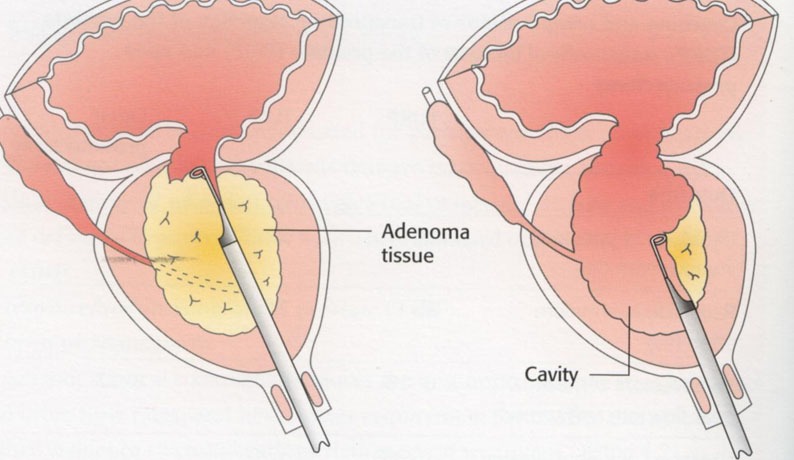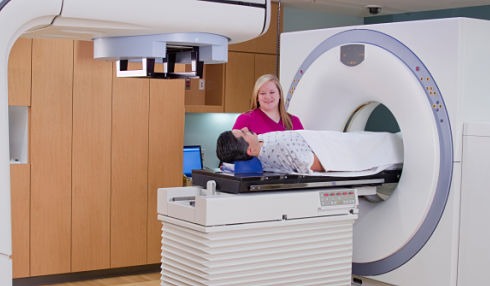Benign Prostatic Hyperplasia (BPH) impacts thousands of men every day.
At Katelaris Urology in Sydney, our specialists treat men with enlarged prostate issues helping to overcome problems and continue living their lives comfortably.
Learn more about Benign Prostatic Hyperplasia (BPH) and its causes, symptoms and treatments.
- What is Benign Prostatic Hyperplasia (BPH) or prostate enlargement?
- Prostate Enlargement (BPH) Diagnosis
- Prostate Enlargement (BPH) Symptoms and Signs
- Prostate Enlargement (BPH) Causes
- Prostate Enlargement Risk Factors
- Prostate Enlargement (BPH) Treatment
- Prostate Enlargement (BPH) Medications
- Lifestyle and Home Remedies for BPH
- Prostate Enlargement (BPH) Prevention
- BPH After Surgery Recovery
- Choosing the Best Treatment for Prostate Enlargement (BPH)
- Frequently Asked Question
What is Benign Prostatic Hyperplasia (BPH) or prostate enlargement?
Benign Prostate Hyperplasia – BPH for short – is the medical term for an enlarged prostate. It is extremely common among older men, progressing as they age and usually causing uncomfortable urinary problems that can impact their quality of life.
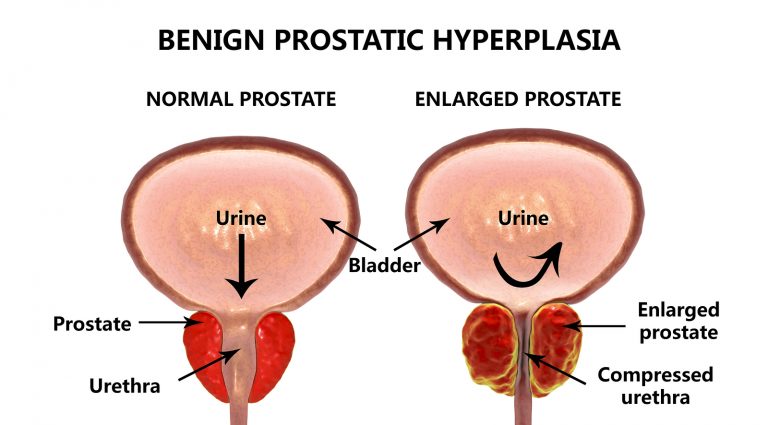
Fortunately, BPH is non-cancerous and has no automatic links to prostate cancer. – although it may lead to other health problems if left untreated, including kidney infections, bladder stones and erectile dysfunction.
Common treatments include prescription drugs and different types of surgery.
Prostate Enlargement (BPH) Diagnosis
To diagnose BPH, doctors use various tests to identify signs of prostate enlargement, including:
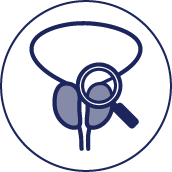
Digital Rectal Examination (DRE)
Here, the doctor inserts a gloved finger into the rectum to check the surface of the prostate. Swelling, hardening, lumps and other irregularities on the prostate surface may be a sign of cancer.
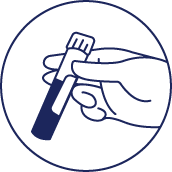
Prostate-Specific Antigen (PSA) Test
This blood test measures the amount of PSA protein produced by the prostate. A slight increase in the level of PSA indicates an enlarged prostate, while a significant increase may indicate cancer.
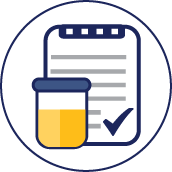
Urodynamic Study (Urine Flow Test)
This sophisticated diagnostic procedure enables in-depth analysis of the causes of urinary incontinence, prostatic obstruction and other associated bladder problems. First, the patient voids into a flow meter, allowing measurement of urinary flow. Then, pressure-sensitive catheters are placed into the bladder to monitor bladder function during filling and emptying. Throughout the procedure, the lower urinary tract is visualised using ultrasound.
Prostate Enlargement (BPH) Symptoms and Signs
As men get older, many experience “obstructive” or “irritative” urinary symptoms (also referred to as “lower urinary tract symptoms”). These include:

Usually, these symptoms are caused by obstruction of the urethra by an enlarged prostate gland. This is normal to ageing men: most will experience some enlargement of the prostate gland from age 50 onward.
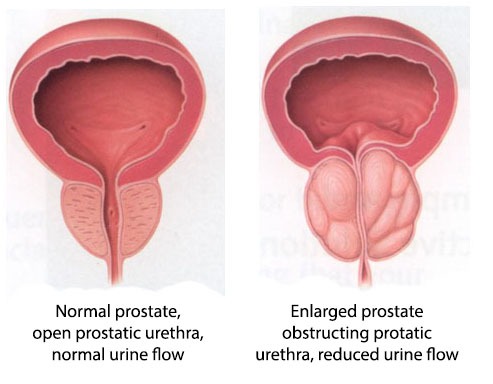
The condition Benign Prostatic Hyperplasia or BPH means a non-cancerous enlargement of the prostate gland.
Often, men experiencing these symptoms believe they have prostate cancer: but early prostate cancer does not cause symptoms of bladder dysfunction. The decision to investigate symptoms further helps determine the severity of the prostate issue and find a suitable treatment.
Prostate Enlargement (BPH) Causes
Despite extensive research, medical professionals still don’t know what causes prostate enlargement or BPH. On the whole, the condition is attributed to the changes in male hormone levels occurring as men age, as well as changes to the cells found within the testes.
What we do know is that when the prostate enlarges, it interferes with the urethra – the tube which carries urine from the bladder through the penis and out of the body – and leads to the symptoms previously described. If and when any urinary problems occur, our advice is to seek immediate medical advice about potential prostate issues.
Prostate Enlargement Risk Factors
It is widely known that prostate enlargement or BPH usually happens as men enter the later stages of life. Therefore, age is among the most common risk factors for BPH – and, unfortunately, one we have no power to change.
Another Benign Prostatic Hyperplasia risk factor is family history. An immediate blood relative with BPH increases the chances of experiencing a similar prostate issue.
Finally, lifestyle can be a risk factor for BPH. Regular exercise and a balanced diet to reduce obesity can help lower the risk.
Prostate Enlargement (BPH) Treatment
There are now several treatments available to relieve the symptoms of BPH. Patients are provided with the best option in line with their age, overall health and the severity of the symptoms.
Bladder Neck Incision
Bladder Neck Incision is an endoscopic procedure performed under general anaesthetic. The trigone, bladder neck and prostate gland are cut to relieve the obstructive effect of the prostate on urinating.
This minimally invasive procedure provides effective long-term relief of symptoms for some patients. Around 25% of men experience retrograde ejaculation following bladder neck incision surgery – when the semen omitted at the point of orgasm goes back into the bladder (also known as dry orgasm) – resulting in sub-fertility. As such, it is not recommended for those wanting to father children.
Transurethral Prostatectomy (TURP)
TURP is a preferred treatment for prostatic bladder neck obstruction. The contemporary procedure uses hi-tech equipment to remove the periurethral adenoma, now known as the transition zone of the prostate.
This technology effectively removes large amounts of prostate tissue in a shorter time than laser ablation, meaning a reduced anaesthetic period and faster recovery. Most patients require no more than an overnight stay in the hospital.
Following TURP, retrograde ejaculation is inevitable, and patients are asked about their reproduction plans before surgery.
GreenLlight Laser Prostate Surgery
GreenLight Laser Treatment for prostate enlargement uses a high-energy laser to remove overgrown prostate tissues and facilitate urine flow.
A prolonged anaesthetic time for large prostate glands and an inability to remove prostatic stones (often causing infection) make it unsuitable for some patients. Additionally, due to its vaporising tissues, it cannot detect if prostate cancer is present in the transition zone of the prostate gland.
GreenLight Laser treatment can cause retrograde ejaculation and is not recommended for men who plan to have children.
UroLift
The UroLift procedure has become a popular choice of surgery due to its minimal invasive nature and low rate of side effects. A surgeon inserts a telescope into the penis up to the prostate gland and uses several small staples to pull the prostate lobes apart and increase urine flow.
UroLift is a relatively simple procedure in a hospital under general anaesthetic. It does not cause retrograde ejaculation, and with no impact on the fertility process, it is suitable for men who want to father children.
Water Vapor Therapy
Water Vapor Therapy – or Water Vapor Thermal Therapy (WVTT) – is a non-surgical treatment that uses the natural energy of steam to remove excess prostate tissues and reduce the prostate gland’s size, making urinating easier.
The benefits of WVTT include no surgery or medication, both of which can have side effects and a prolonged recovery time.
Rezum
Rezum is a brand of Water Vapor Therapy. Like others of its type, it uses steam to remove excessive prostate tissues, reducing the prostate to its usual size. Minimally invasive, it takes days to recover, although side effects, including discomfort when urinating or blood in the urine, may continue for a few weeks before subsiding.
Transurethral Incision of the Prostate (TUIP)
TUIP is a relatively minor procedure where a surgeon places one or two small cuts in the prostate gland and bladder neck to allow for urine to pass through. It suits a slightly enlarged prostate gland or patients with health problems deemed too risky to perform other surgeries.
Transurethral Electrovaporisation (TUVP)
For this procedure, the urologist uses an electrode to heat your prostate tissue, turning the prostate’s tissue cells into steam to reduce its size and improve urine flow.
The procedure involves an instrument being inserted through the urethra into the prostate. It is minimally invasive and safe, although side effects may include retrograde ejaculation and erectile dysfunction. Recovery time is typically around 4-6 weeks.
Prostate Enlargement (BPH) Medications
Surgery doesn’t suit everyone, and there are two primary prostate enlargement medications available to help patients treat BPH.
Alpha-blockers
Alpha-blockers are medications that relax the smooth muscles of the bladder neck and prostate to reduce bladder obstruction and improve urine flow. Examples of alpha-blockers are Terazosin, Alfuzosin, Tamsulosin and Doxazosin. Although these medications help relieve the symptoms of BPH, they do not reduce the size of the prostate and are therefore prescribed to patients with a slight enlargement. Known side effects include retrograde ejaculation and dizziness.
5-alpha Reductase Inhibitors
These oral medications work by inhibiting the production of male hormones thought as responsible for enlarging the prostate gland. 5-alpha reductase inhibitors, such as Finasteride and Dutasteride, help relieve the symptoms of BPH, increase the urinary flow rate and reduce the prostate’s size. However, these drugs are only suitable for patients with a severely enlarged prostate.
Combination Therapies
As it sounds, combined therapies apply the best of both worlds and use alpha-blockers and 5-alpha reductase inhibitors to reduce BPH symptoms.
Lifestyle and Home Remedies for BPH
While there is no known natural cure for BPH, certain healthy habits and lifestyle choices may assist with managing the condition. As well as helping with BPH, they can also minimise the chances of diabetes and heart disease.
Here are the most common home remedies to try:
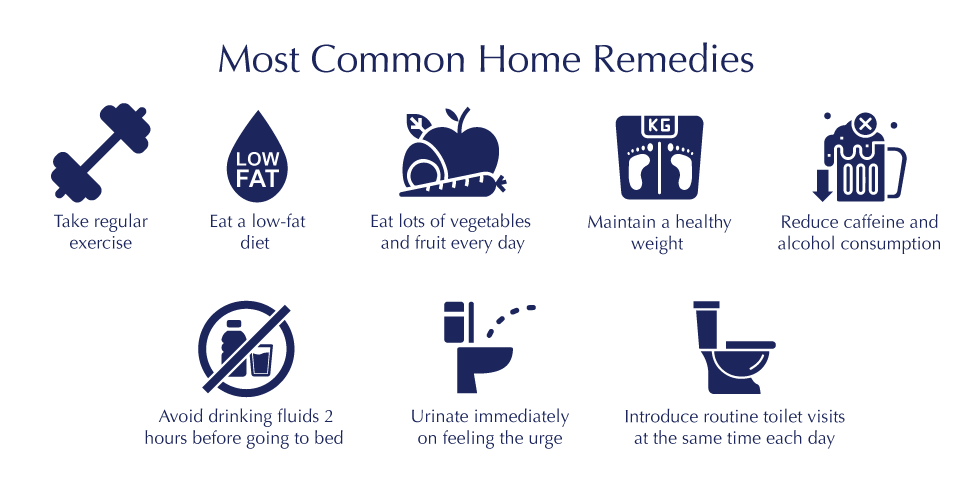
Prostate Enlargement (BPH) Prevention
Many people nowadays look to preventative means of managing their health, and it’s the same with BPH.
Unfortunately, with the causes unclear, it is difficult to pinpoint how to prevent prostate enlargement from happening altogether. Yet there are ways to help minimise the condition (and others linked to older unhealthy males like heart disease).
Medical professionals continue to encourage a healthy lifestyle to patients, particularly as they age, to support benign prostatic hyperplasia prevention – a balanced diet, regular exercise, and lots of sleep. While it may not avoid an enlarged prostate altogether, it puts the body and mind in the right place to tackle it.
BPH After Surgery Recovery
BPH surgery recovery differs from one patient to the next and depends on their treatment, age and lifestyle.
Following surgery for BPH, patients with obstructive symptoms will experience an immediate improvement in urinary flow. Irritative symptoms such as frequency, urgency and nocturia may take three to six months to settle.
The results depend on the degree of pre-operative detrusor instability: that is, bladder instability caused by chronic outflow obstruction. Sometimes, medication is also necessary during recovery.
15% of men with chronic detrusor instability before surgery continue to have symptoms afterwards and may require ongoing medication such as transdermal patches. However, all obstructive symptoms will be relieved by surgery.
Blood in the urine is quite common and may persist for three months, particularly for men on blood-thinning medication.
Read more post-operative information for patients
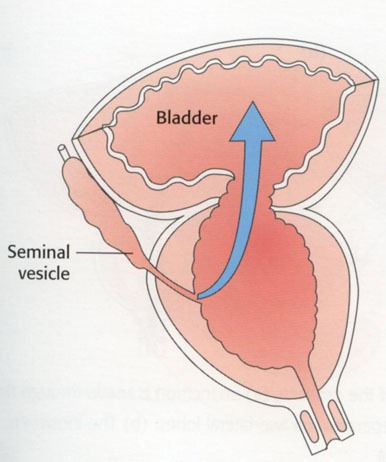
Transurethral prostatectomy and bladder neck incision do not cause erectile dysfunction. They are not associated with damage to the nerves that control the erectile tissue.
However, they do cause retrograde ejaculation.
Choosing the Best Treatment for Prostate Enlargement (BPH)
Treatment options for prostate enlargement are vast, including medications, surgery and minimally invasive therapies. To find the right treatment for prostate enlargement, make sure to consult a doctor who can assess your condition in detail, considering the size of your prostate, your symptoms, any other health conditions and your preferences.
Dr Phillip Katelaris is an award-winning urological surgeon who specialises in prostate enlargement treatment. At Katelaris Urology in Sydney, we provide you with sound medical advice and effective treatment for urological problems, such as prostate enlargement or cancer, kidney stone, bladder cancer, erectile dysfunction and incontinence.
Schedule an appointment with Dr Katelaris today – call (02) 9477 7904.
Frequently Asked Question
How do I know if my prostate is enlarged?
Here are the common ways to tell if your prostate is enlarged:
- Difficulty in passing urine, for example, difficulty getting started or dribbling
- Frequent urination
- Waking at night to urinate
- Pain or burning when passing urine
- Pain when ejaculating
- Cloudy urine
- Blood in the urine
- Pain in your scrotum, penis, testicles or rectum
Who is at risk of prostate enlargement?
Research shows that 20% of men at the age of 40 years had an enlarged prostate, 70% at age 60, and 90% by the age of 80 years old. As such, the common assumption in medical circles is that prostate enlargement results from ageing and does not reflect a disease process.
However, approximately 25% of men will require surgery to treat the symptoms of an enlarged prostate.
What foods are good for shrinking the prostate?
Diet and complementary medications have been trialled for decades, however it appears there is no evidence of any significance to say these methods help reduce an enlarged prostate.
Does an enlarged prostate affect a man sexually?
Bladder neck obstruction (enlarged prostate) and erectile dysfunction are entirely different conditions. Both are common in men over the age of 50 years and are treatable.
Is TURP surgery painful?
TURP is an endoscopic keyhole procedure that is not painful and has a quick recovery time. If you are suffering from prostate enlargement, speak with your GP about whether this is a suitable course of treatment.
Does having Benign Prostatic Hyperplasia increase the risk of prostate cancer?
There are no links between prostate enlargement (BPH) and prostate cancer. The symptoms can be similar for some men, making it critical to check in with a medical professional if you are concerned about your prostate gland and the potential for having either condition.
How common is Benign Prostatic Hyperplasia?
BPH is extremely common in men aged 50 and over and becomes more common again as they reach their 70s and 80s. As such, it is seen as a condition linked to the ageing process.
What is the difference between prostate cancer and Benign Prostatic Hyperplasia?
BPH is a non-cancerous condition with no immediate threat to life. More than anything, BPH is uncomfortable for men causing difficulty and discomfort when urinating. Prostate cancer is a serious condition and can pose a threat to life when left untreated.
What is the most successful treatment for BPH?
Most modern treatments for BPH are a success, although they must be aligned with the severity of a patient’s condition.
How to check if prostate is enlarged?
If you are concerned about your prostate or experiencing symptoms of BPH, it is important to visit your GP immediately and discuss this matter further. Your GP will check your prostate and discuss your options for treatment based on the diagnosis.
Is enlarged prostate painful?
Patients have different BPH symptoms from one to the next. Some will have pain when urinating while others will simply find it an inconvenience having to urinate more often or during the night. Pain in the prostate may indicate several conditions, one being BPH. If you are experiencing pain in the prostate, seek further advice from your GP or urologist immediately.
